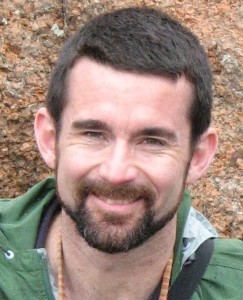 Once again, after waiting with bated breath, hope, and anxiety, medical students and residency programs alike have received the results of the annual residency “match.” After months of seemingly endless interviews and paperwork, and the submission of preference lists to the computer based algorithm at the National Residency Matching Program (NRMP), we finally know what the future holds . . . at least in part.
Once again, after waiting with bated breath, hope, and anxiety, medical students and residency programs alike have received the results of the annual residency “match.” After months of seemingly endless interviews and paperwork, and the submission of preference lists to the computer based algorithm at the National Residency Matching Program (NRMP), we finally know what the future holds . . . at least in part.
For graduating medical students, match results determine where (and in what specialty) they will spend the next few years of postgraduate education. For residency programs, the results tell us who we will be teaching in the coming years (and whether enough applicants “liked” us in order to fill an incoming class). And for each specialty as a community, match results tell us something (we think) about the current and future prospects for our area of medicine.
As described in a press release from the American Academy of Family Physicians, out of 3260 residency training slots offered, 3105 were filled in the NRMP match. The good news is that this is not only an increase from last year, but also a record high number of applicants matching into family medicine. Moreover, this year continues a trend over the past seven years of increasing numbers of trainees entering family medicine residencies.
The somewhat less impressive side of the story is that this means 155 spots went unfilled (perhaps not a big deal), and that the actual fill rate (95.2%) did not meaningfully change from last year (95.1%).
Moreover, when looking back over the past 20 years to 1996 (coincidentally, when I was in the match), while the absolute number of trainees entering family medicine has increased (from 2840 to 3105), the percentage of all trainees matching to family medicine has dropped from 15.8% in 1996 to 11.4% in 2016.
Meanwhile, the total number of trainee matches over that same time increased from 18 007 to 26 036—an increase of 45%. In short, the past 20 years have seen a dramatic increase in the number of physicians entering residency training in the US, while the pace of those entering family medicine has actually slowed.
What do these numbers mean for the future of medicine in the US, and for family medicine in particular?
• We are facing a shortage of primary care physicians, and current trends seem set to make it worse, not better. An estimate of the future workforce required in order to avoid a primary care shortage projected a need for more than 44 000 primary care physicians by 2035—a goal obtainable only with a 27% increase in primary care trainees.
• We need to be ever more intentional about “pipeline” issues. “Family Medicine for America’s Health,” a collaborative effort of the eight US family medicine organizations, has outlined several strategic priorities to bolster the number of trainees entering family medicine, and this year’s match numbers emphasize even more the need for recruitment of family medicine oriented students into medical school, and for efforts to support and sustain those students’ interest in family medicine while in medical school.
• We need a renewed sense of identity in family medicine. Are we comprehensive generalists? Are we “primary care gatekeepers” and merely a pipeline to direct patients “downstream” to specialty care? Are we frontline public health professionals, ready to engage all the “social determinants” of health? If we do not know who we are, then we leave ourselves and our patients confused, and the trend towards decreasing use of primary care by patients will continue.
Being a family doctor can be a great calling: I love what I do, and I am privileged to be able to teach family medicine as well. However, as I look at the numbers from this year’s match and the trends for the future that those numbers imply, I wonder what the future holds.
Will family medicine continue to develop as a genuinely comprehensive specialty, which gives patients comprehensive continuity care? Will trainees see the value and challenge of family medicine as a profession? Or will medicine in the US continue to become more and more oriented towards fragmented and specialist care?
We know that primary care “helps prevent illness and death”—can we continue to find ways to translate that knowledge into the realities of medical education and practice?
William E Cayley Jr practices at the Augusta Family Medicine Clinic; teaches at the Eau Claire Family Medicine Residency; and is a professor at the University of Wisconsin, Department of Family Medicine.
Competing interests: I declare that I have read and understood BMJ policy on declaration of interests and I have no relevant interests to declare.
